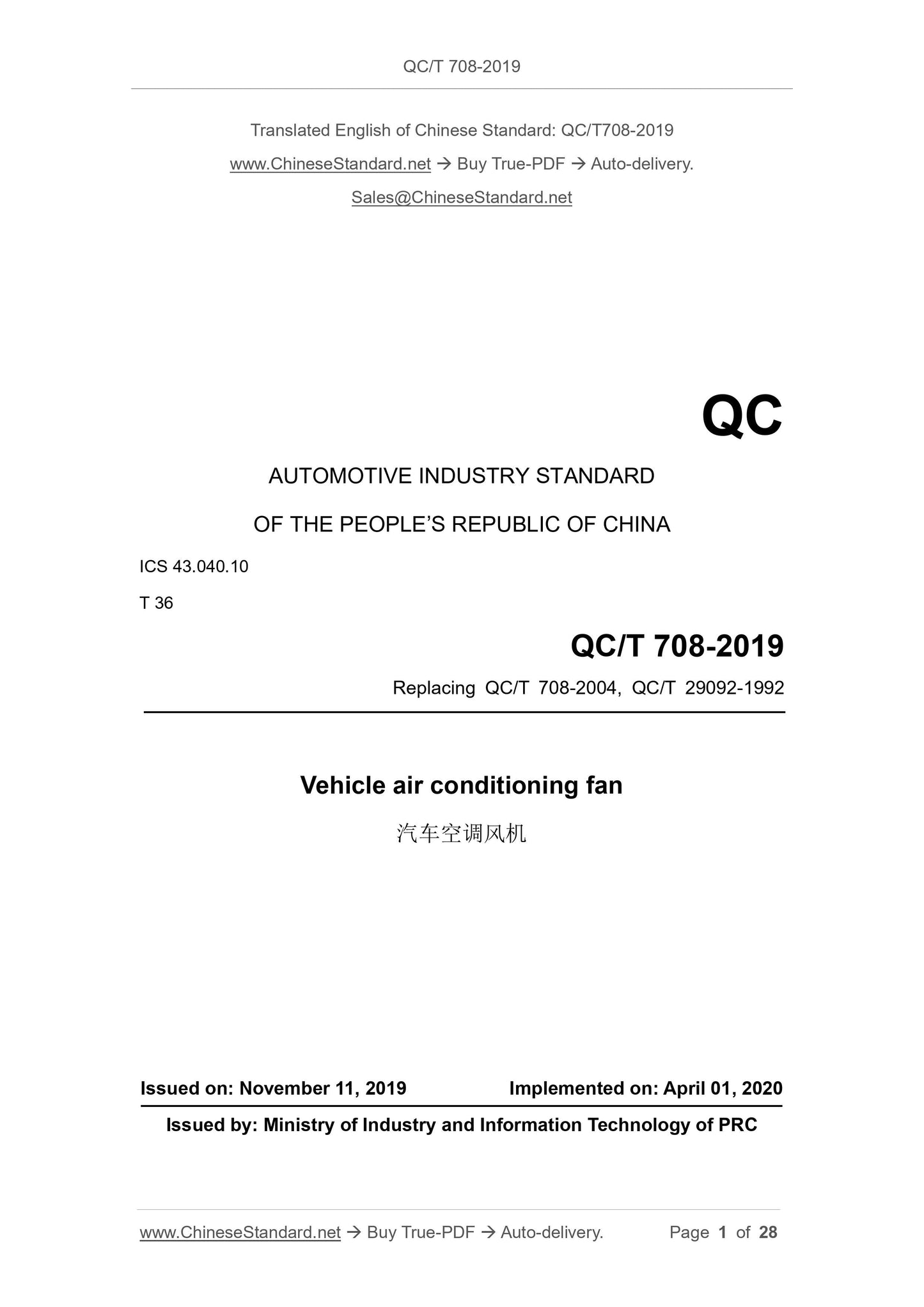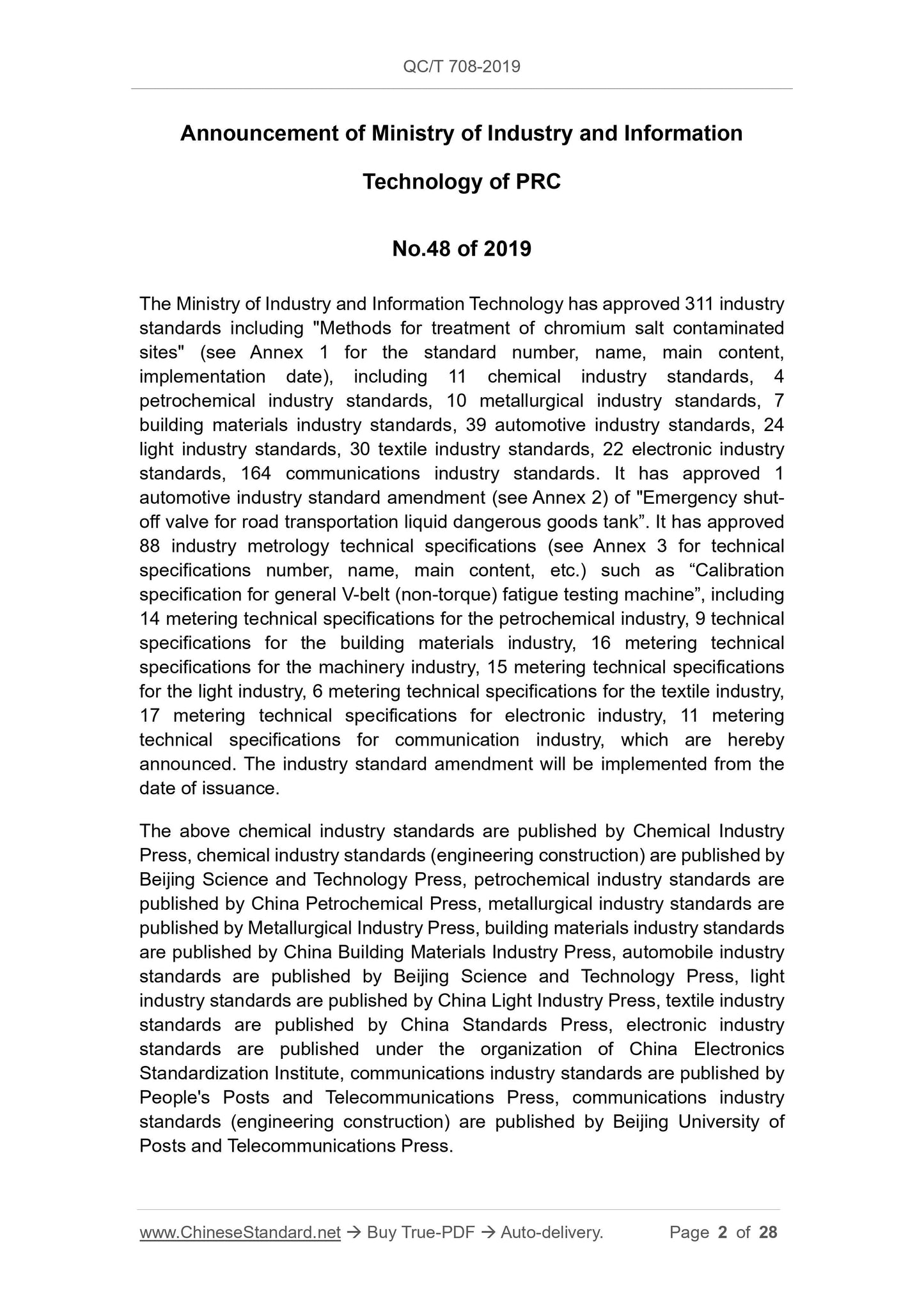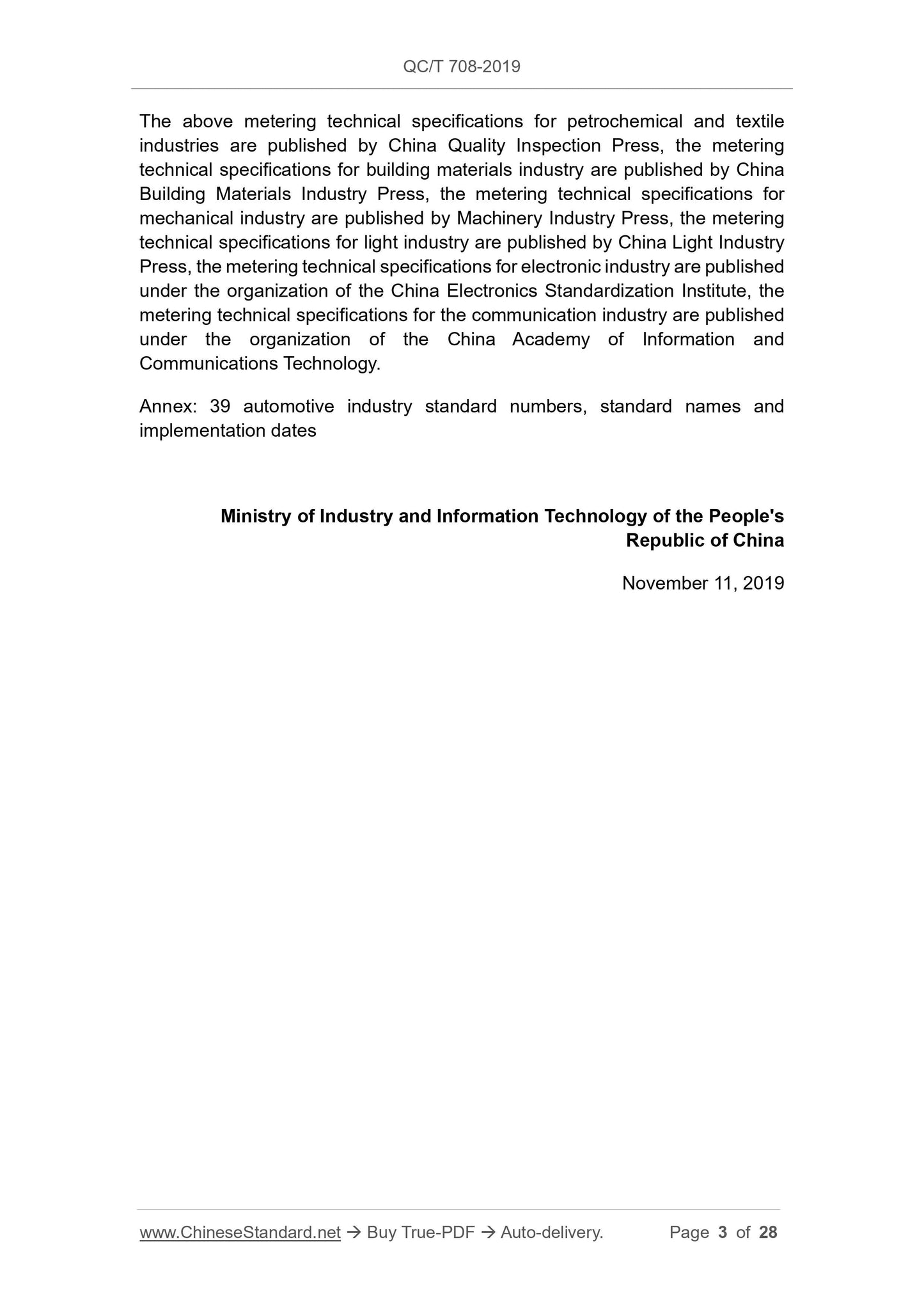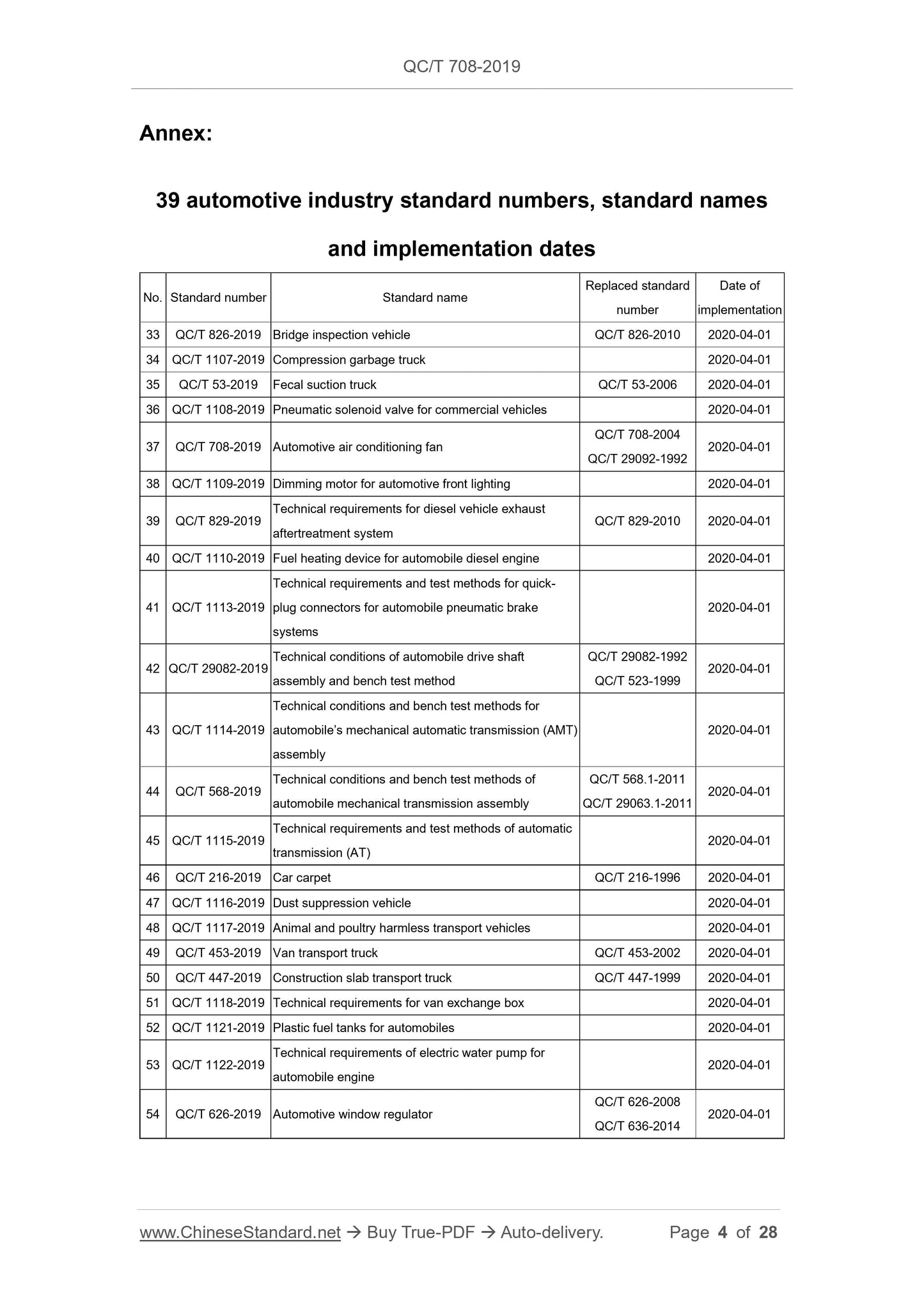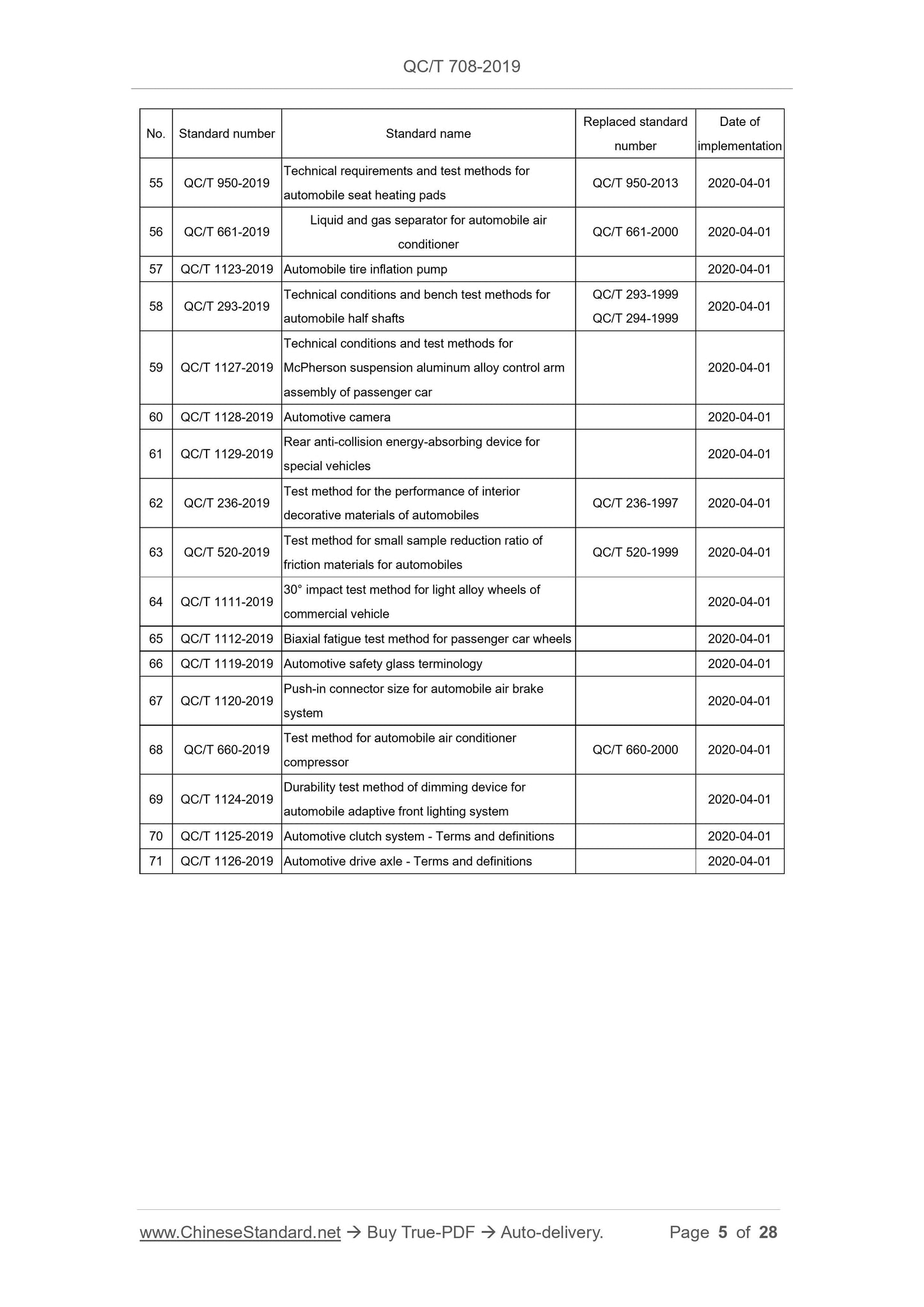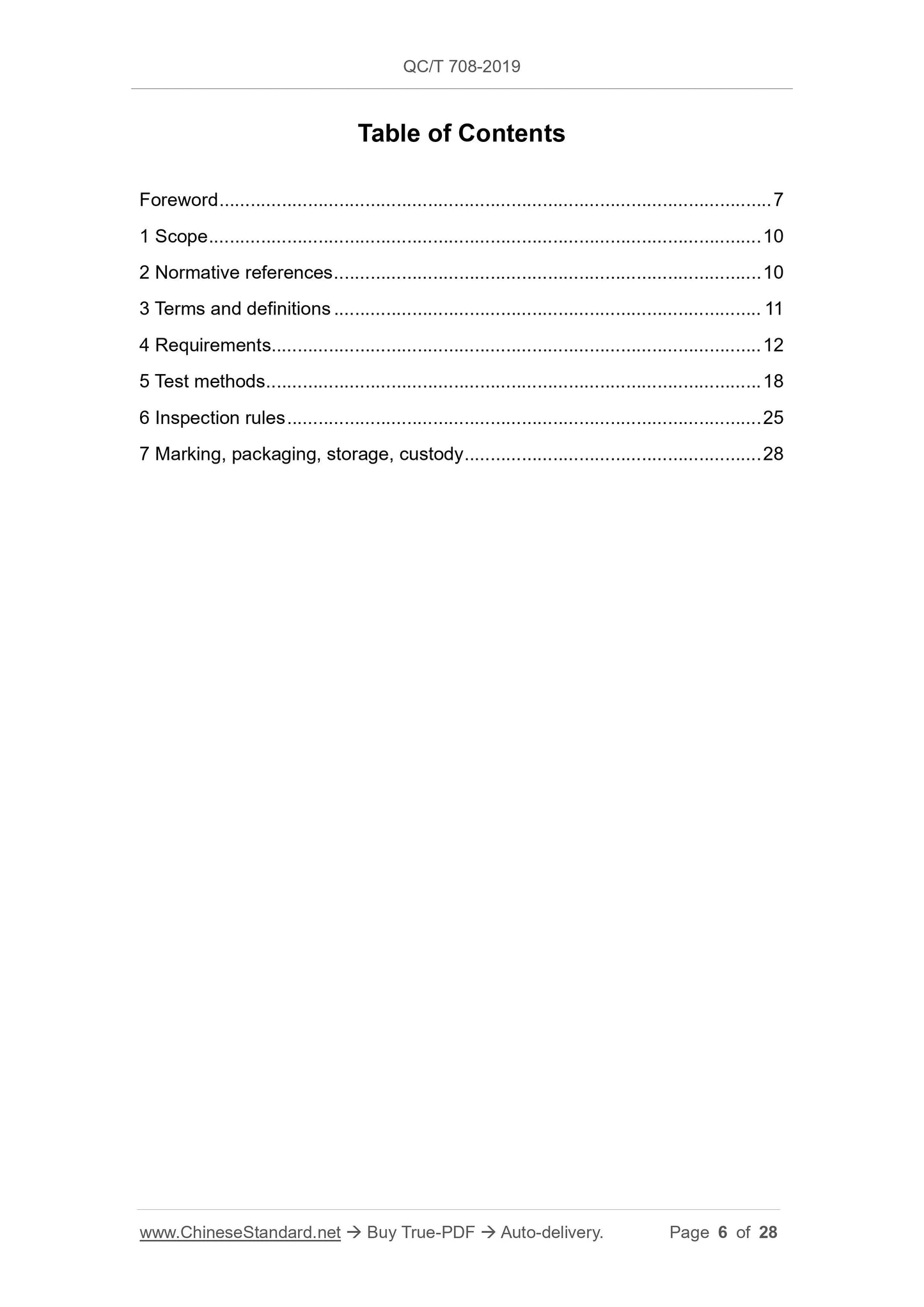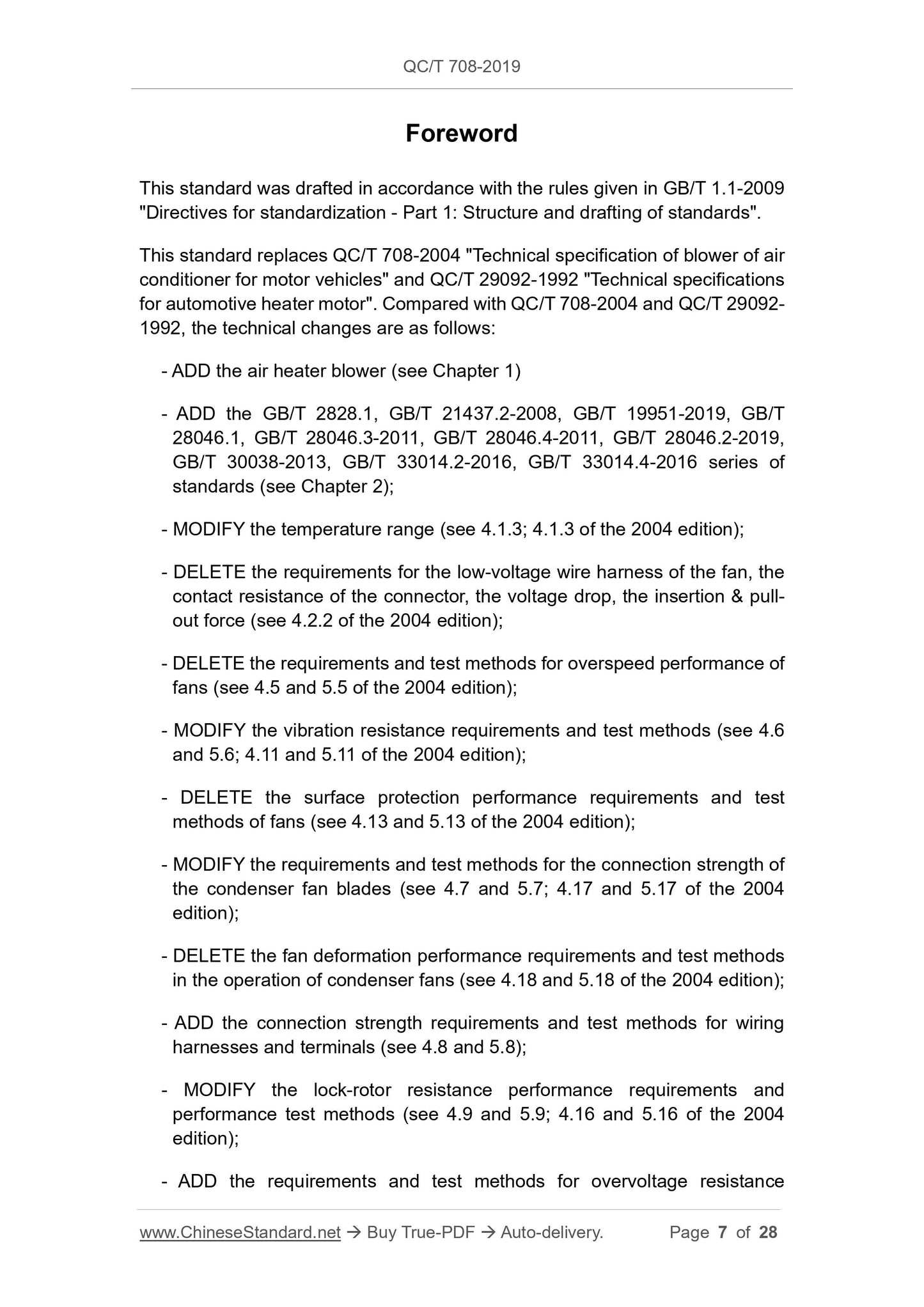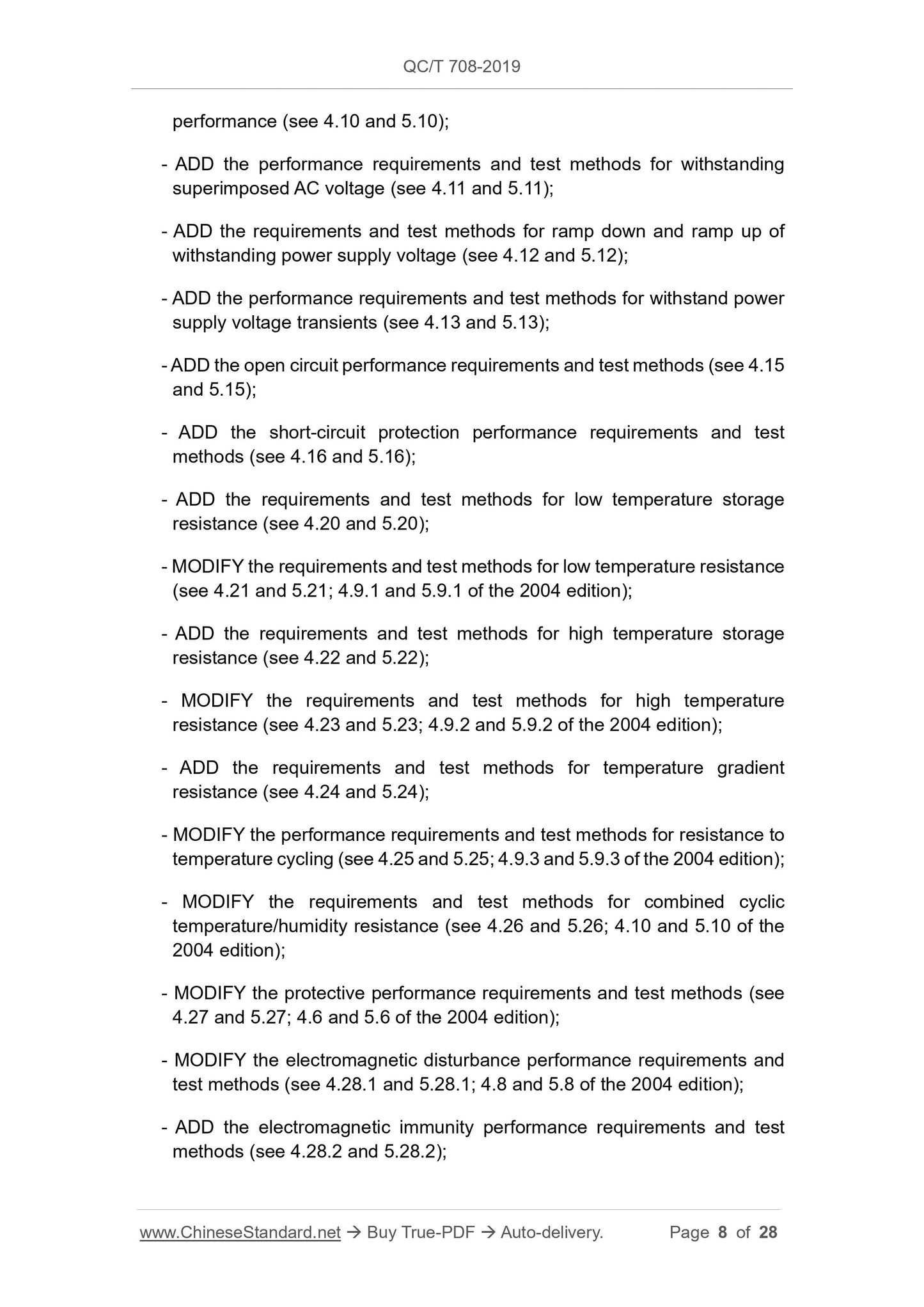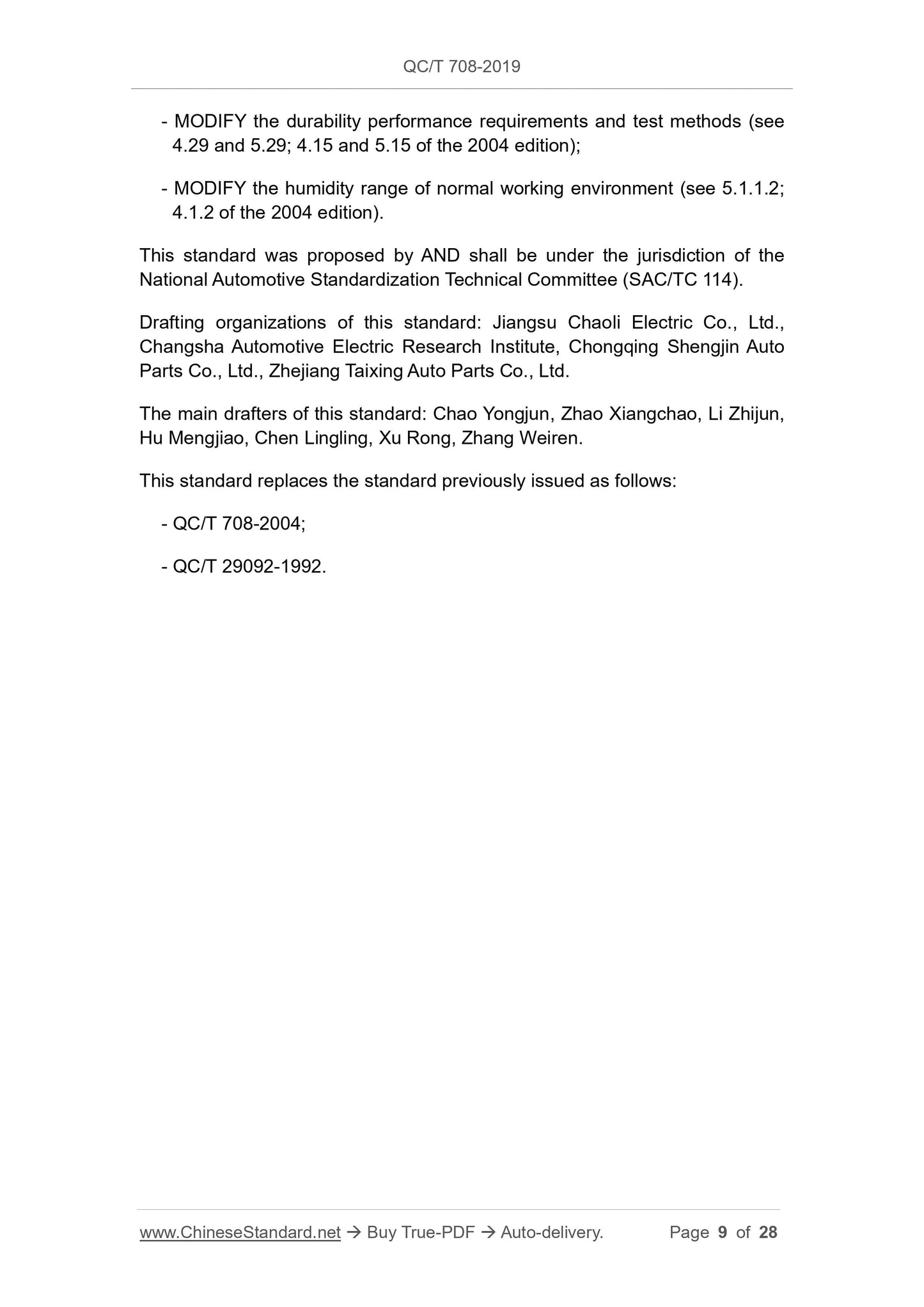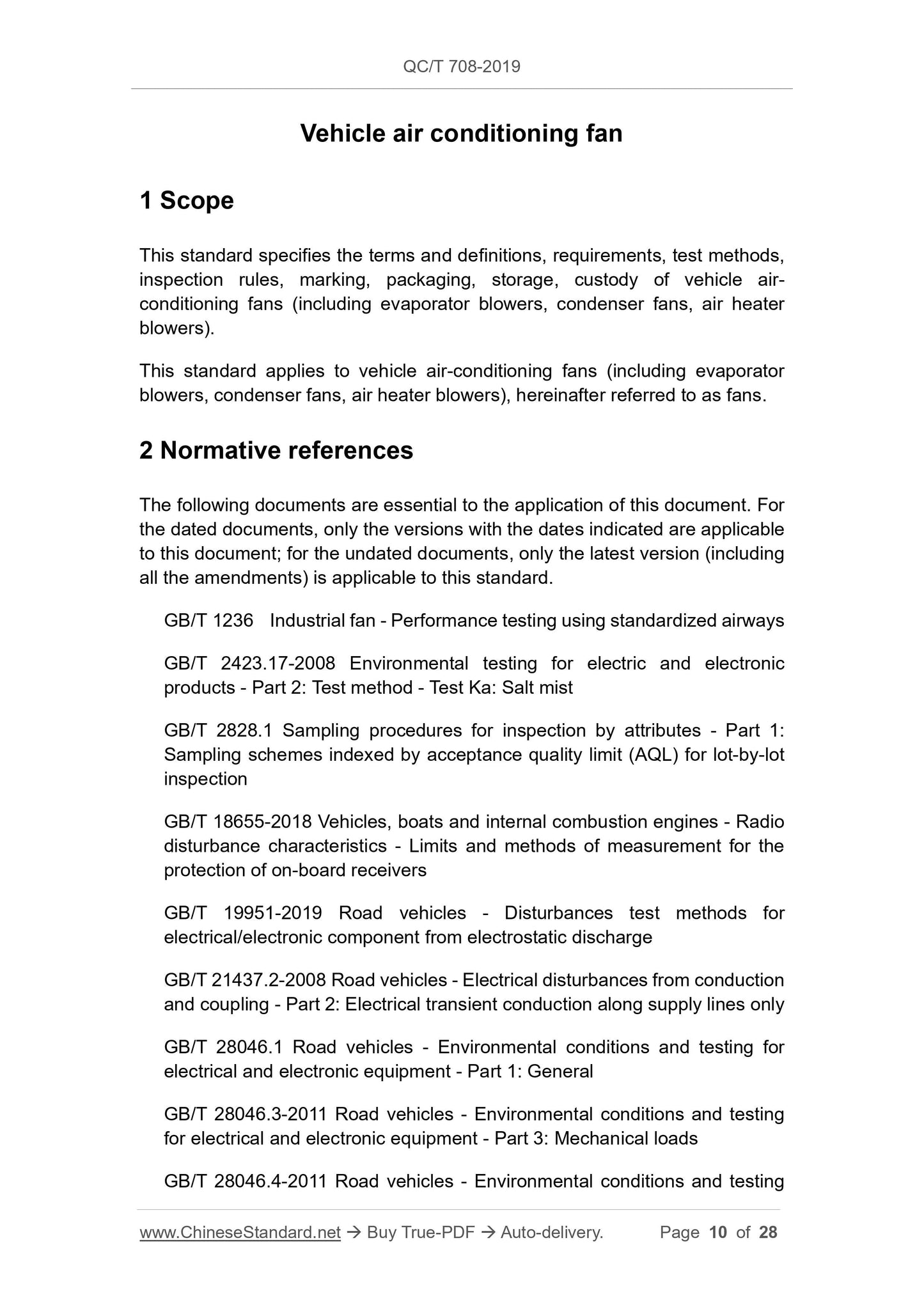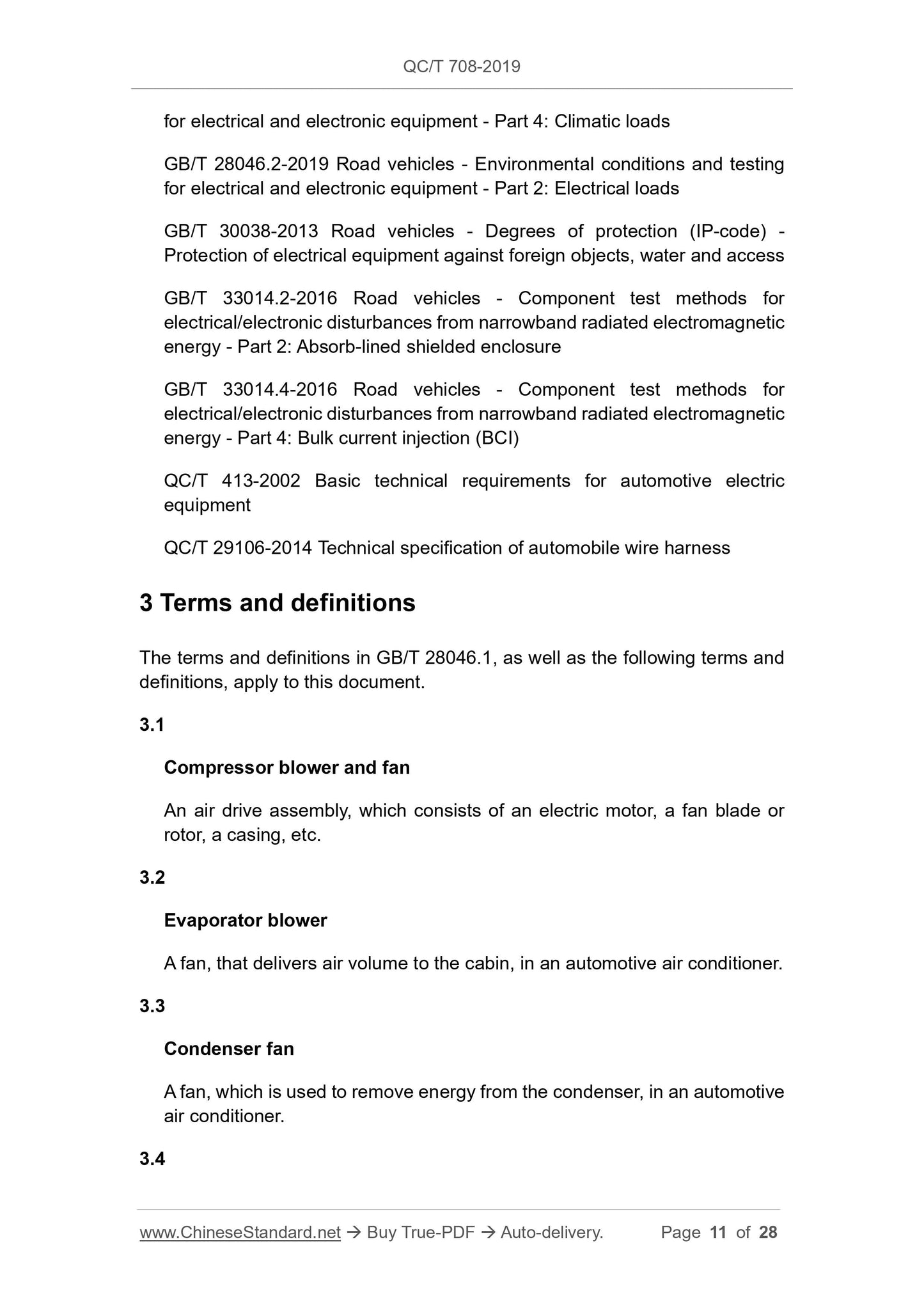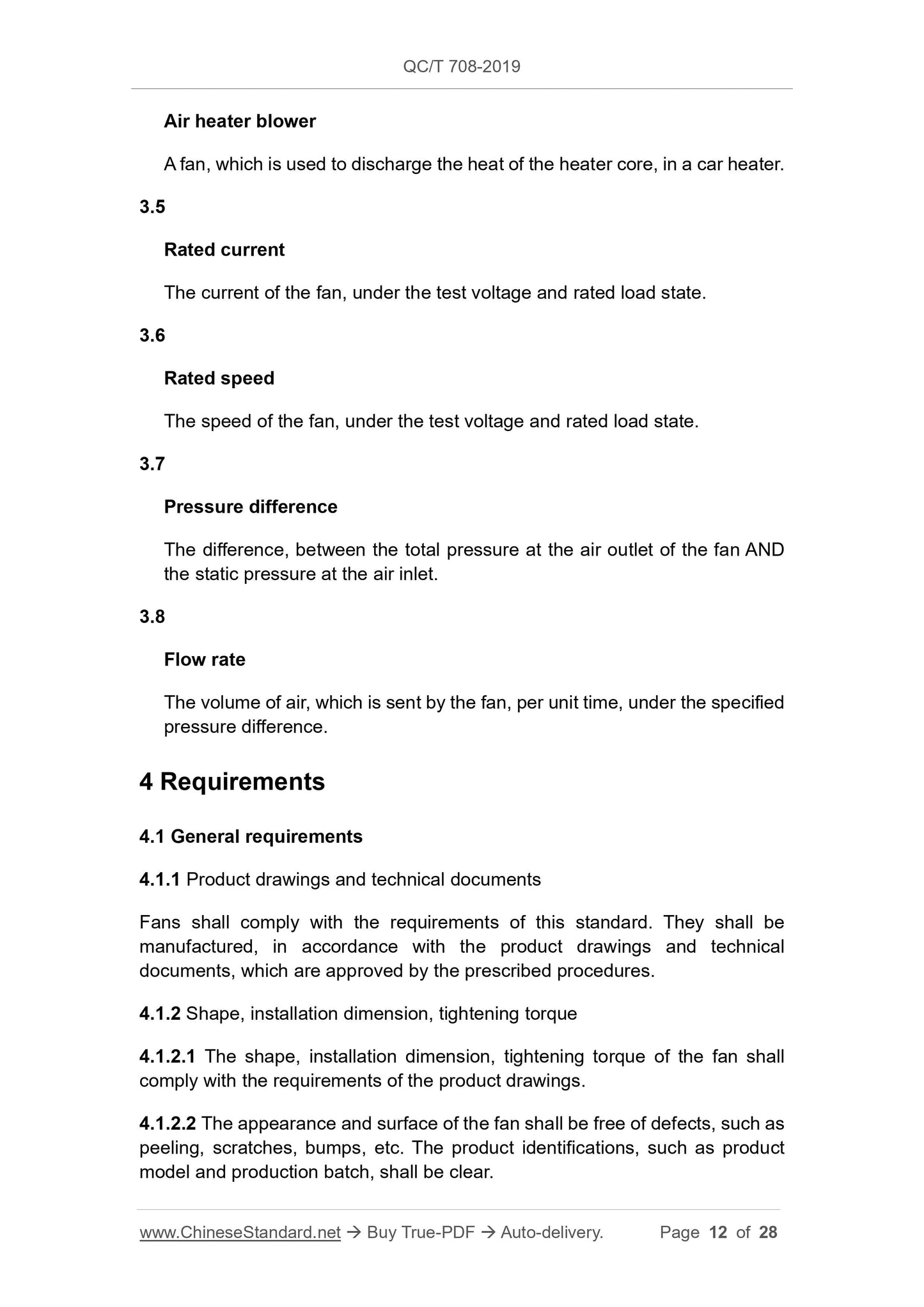1
/
of
12
www.ChineseStandard.us -- Field Test Asia Pte. Ltd.
QC/T 708-2019 English PDF (QC/T708-2019)
QC/T 708-2019 English PDF (QC/T708-2019)
Regular price
$295.00
Regular price
Sale price
$295.00
Unit price
/
per
Shipping calculated at checkout.
Couldn't load pickup availability
QC/T 708-2019: Vehicle air conditioning fan
Delivery: 9 seconds. Download (and Email) true-PDF + Invoice.Get Quotation: Click QC/T 708-2019 (Self-service in 1-minute)
Newer / historical versions: QC/T 708-2019
Preview True-PDF
Scope
This standard specifies the terms and definitions, requirements, test methods,inspection rules, marking, packaging, storage, custody of vehicle air-
conditioning fans (including evaporator blowers, condenser fans, air heater
blowers).
This standard applies to vehicle air-conditioning fans (including evaporator
blowers, condenser fans, air heater blowers), hereinafter referred to as fans.
Basic Data
| Standard ID | QC/T 708-2019 (QC/T708-2019) |
| Description (Translated English) | Vehicle air conditioning fan |
| Sector / Industry | Automobile and Vehicle Industry Standard (Recommended) |
| Classification of Chinese Standard | T36 |
| Classification of International Standard | 43.040.10 |
| Word Count Estimation | 20,275 |
| Date of Issue | 2019 |
| Date of Implementation | 2020-04-01 |
| Issuing agency(ies) | Ministry of Industry and Information Technology |
| Summary | This standard specifies the terms and definitions, requirements, test methods, inspection rules, marking, packaging, storage and custody of automotive air-conditioning fans (including evaporative fans, condenser fans, and heater fans). This standard applies to automotive air-conditioning fans (including evaporative fans, condensing fans, heater fans). |
Share
